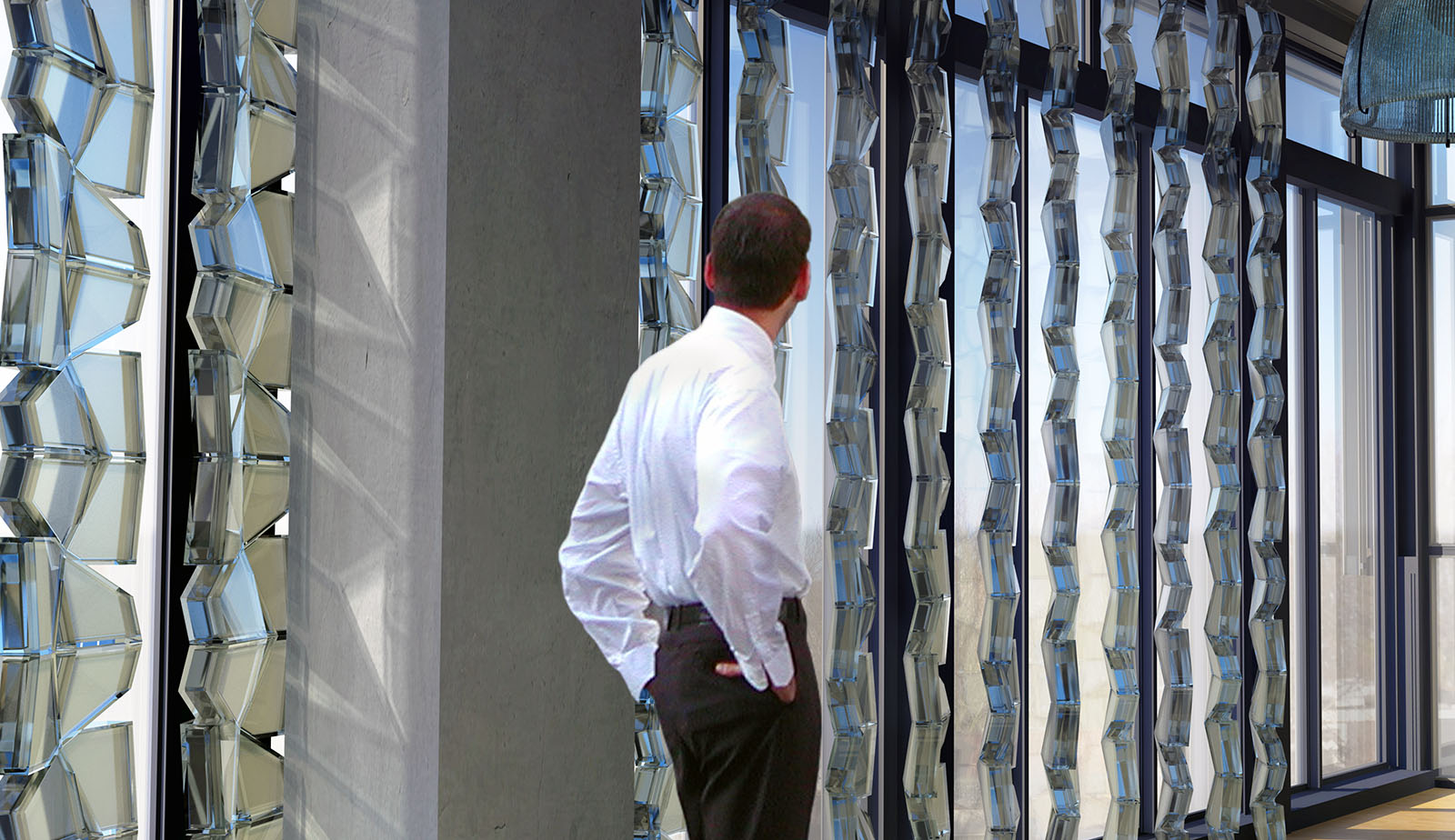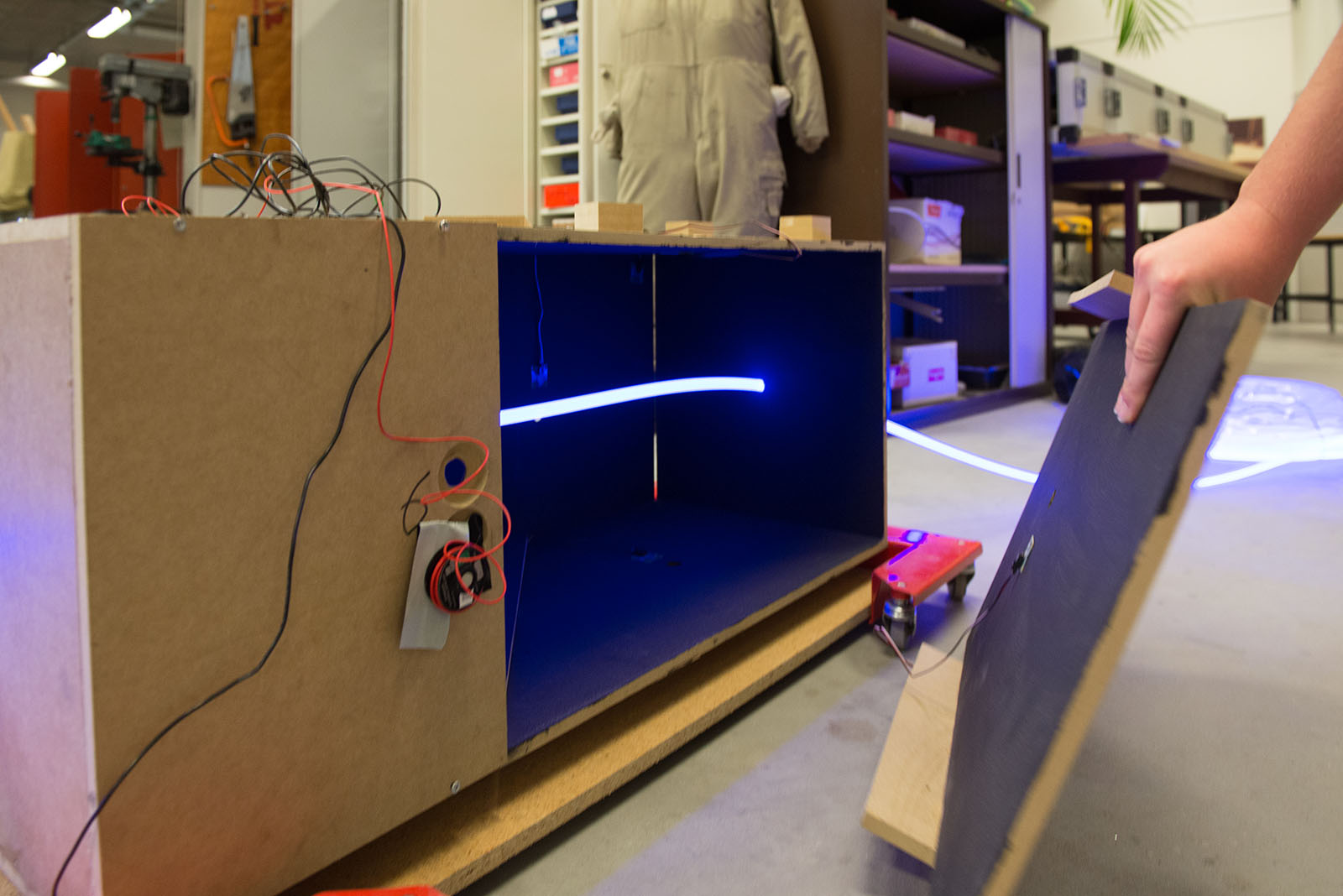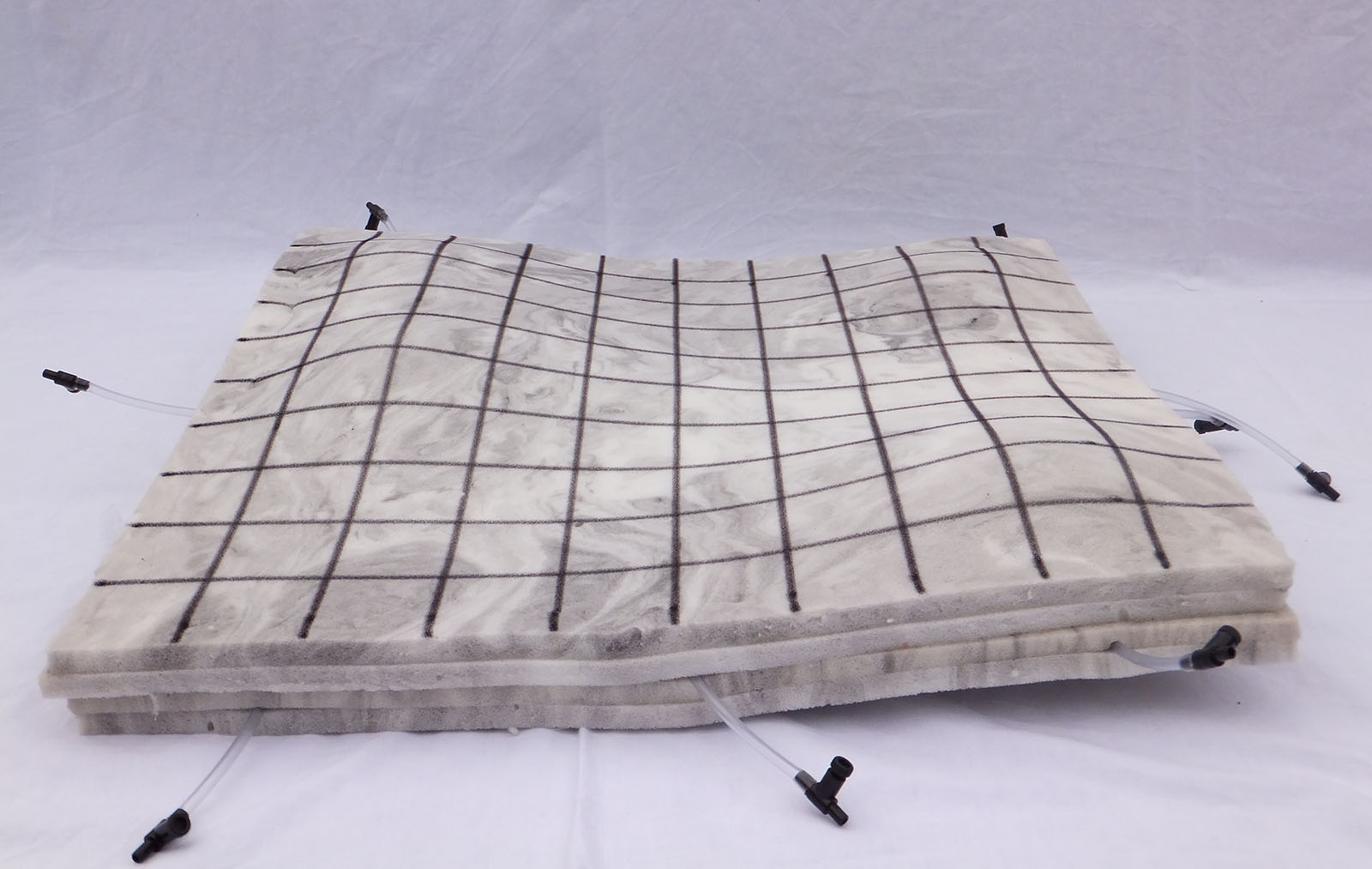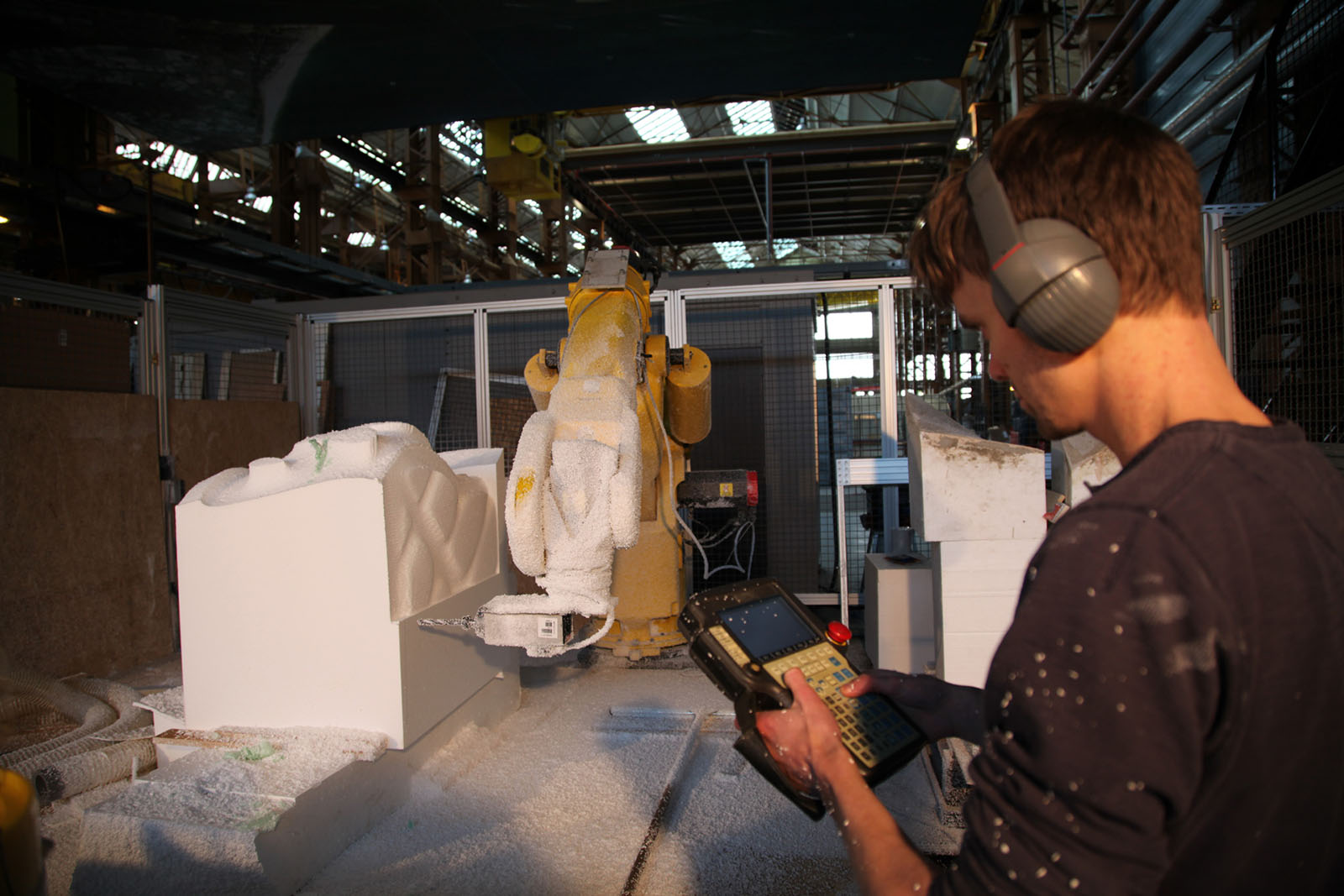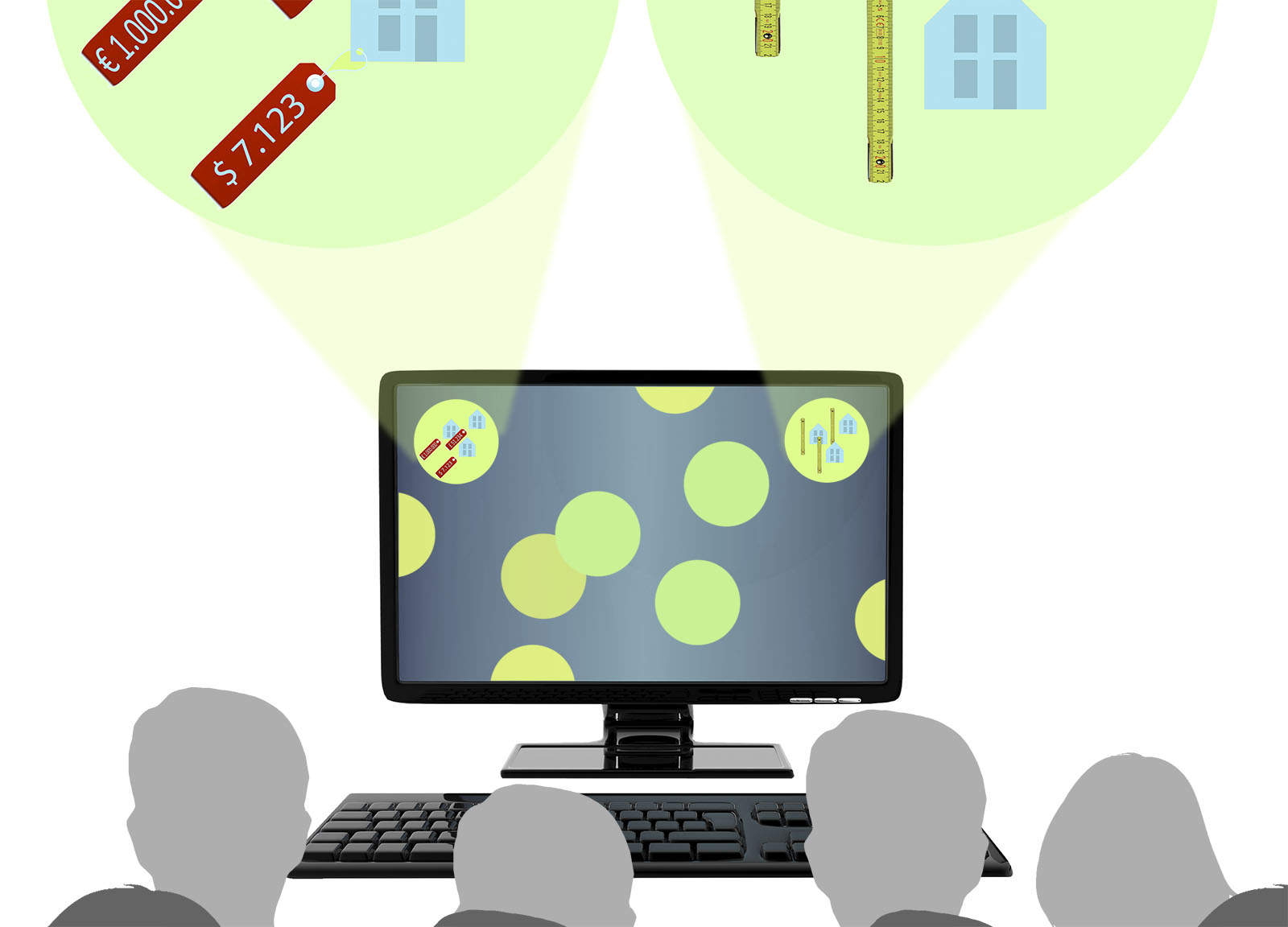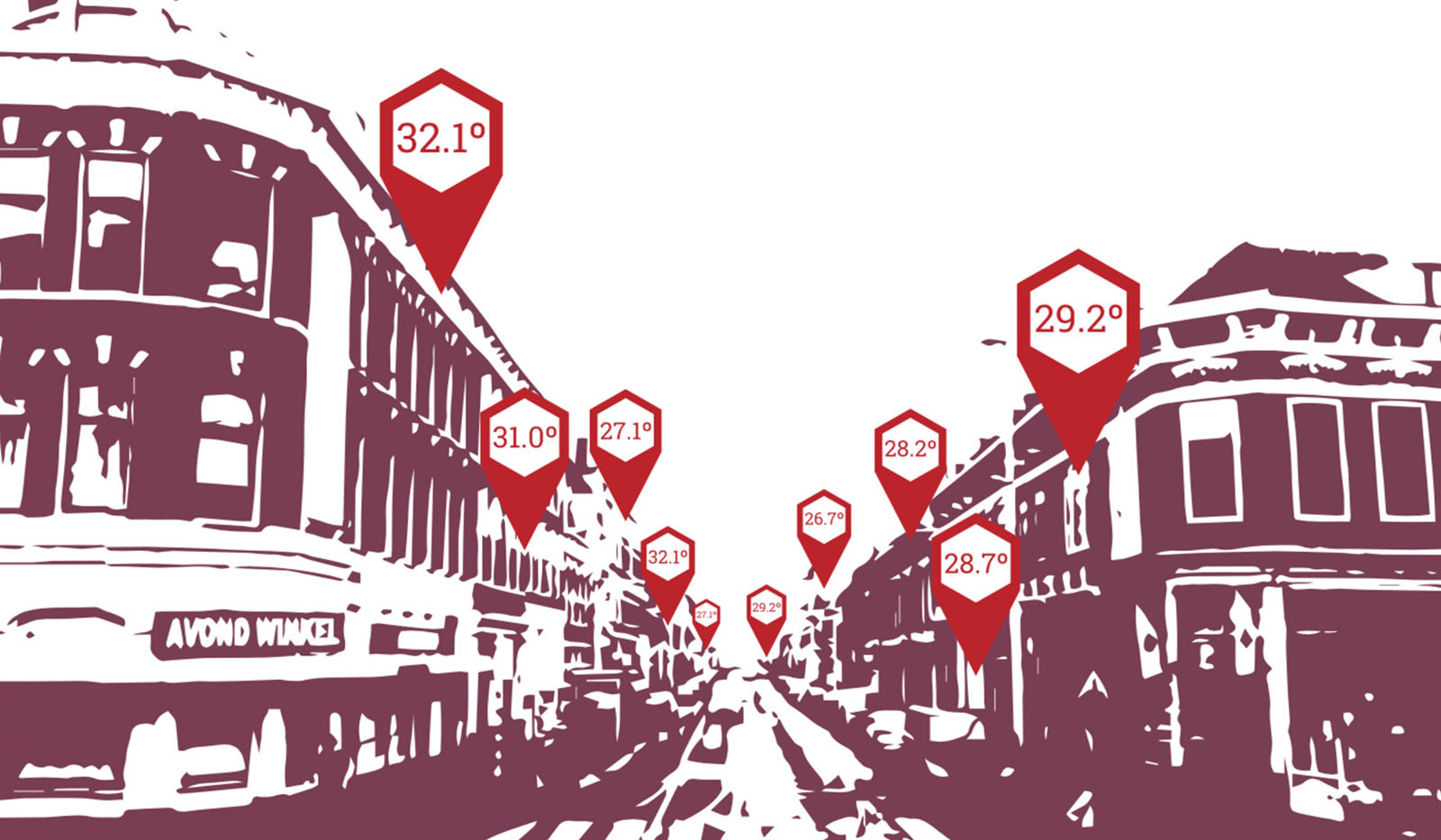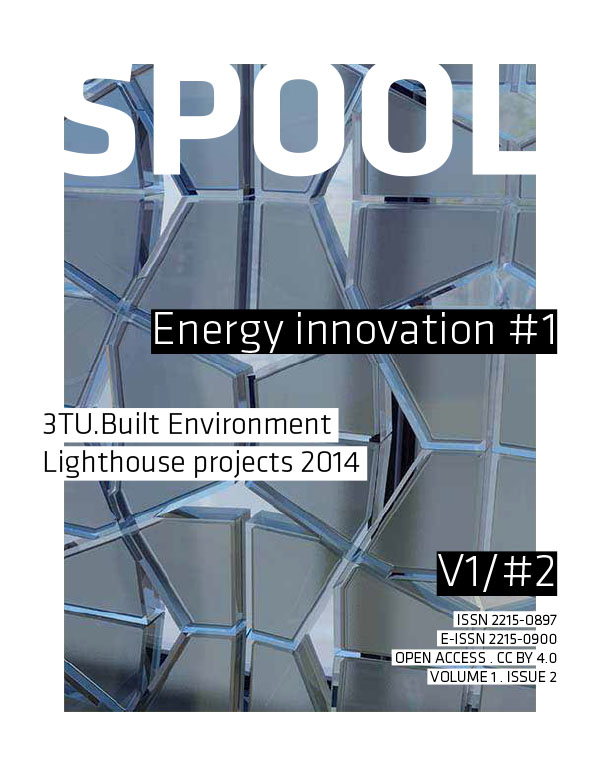
Thematic issue:
3TU.BOUW Lighthouse projects 2014
Three Dutch Universities of Technology decided to collaborate as 3TU.Bouw Center of Excellence for the Built Environment. This issue of SPOOL is dedicated to the so-called lighthouse projects that were selected based on the 3TU.BOUW Lighthouse call 2014.
‘Lighthouse projects’ aim at promoting and starting up imaginative research projects that are related to the theme ‘Energy and the Built Environment’, delivering tangible results like demo's, mock-ups, prototypes, test runs, lab environments and so on.
6 projects / xx pages
E-ISSN 2215-0900
Issue editors
Ir. Siebe Bakker, bureaubakker Delft
Dr.ir. Frank van der Hoeven, TU Delft
Projects
-
The DoubleFace project aims at developing a new product that passively improves thermal comfort of indoor and semi-indoor spaces by means of lightweight materials for latent heat storage, while simultaneously allowing daylight to pass through as much as possible. Specifically, the project aims at designing and prototyping an adjustable translucent modular system featuring thermal insulation and thermal absorption in a calibrated manner, which is adjustable according to different heat loads during summer- and wintertime. The output consists of a proof of concept, a series of performance...
-
The project set out to proof that a conventional optical fibre lighting system for highlighting the structure of a façade can be operated more energy-efficiently through the substitution of the projector using a metal halide reflector lamp by a laser. This is investigated by looking into the photometric assessment of such systems as well as the electric power draw during operation. In preparation for a potential exterior demonstration installation, an additional focal point of the research was the design and testing of a weatherproof case that provides protection to the laser and the...
-
Het is wenselijk dat gebouwen beschikken over voldoende en de juiste mogelijkheden om te ventileren. Buiten de benodigde ventilatievoorzieningen is het echter de bedoeling een gebouw zo luchtdicht mogelijk te maken ten einde comfortklachten en onnodig energiegebruik te voorkomen. In het Bouwbesluit zijn eisen met betrekking tot de luchtdoorlatendheid – het tegenovergestelde van luchtdichtheid – opgenomen. Met betrekking tot een heel gebouw wordt in Art. 5.4 lid 1 het volgende geëist: De volgens NEN 2686 bepaalde luchtvolumestroom van het totaal aan verblijfsgebieden, toiletruimten en...
-
The Kine-Mould is a development that makes it easier to manufacture building elements with complex geometry. Since June 2014 the team has been working on a range of solutions and prototypes. Various building materials have been investigated such as concrete, glass and plastic composites. In a joint effort of TU Delft and TU Eindhoven the following prototypes were designed and built:
- One for thermoplastic polymers;
- One for concrete elements;
- One for glass elements;
- Several for inflatable mould surfaces.
Students carried out a...
-
Robotically Driven Construction of Buildings (RDCB) is an exploration into design to production solutions for robotically driven construction of buildings initiated by the faculties of Civil Engineering and Architecture, TU Delft and Architecture, TU Eindhoven and implemented 2014 within the 3TU Lighthouse framework. The aim of was to involve the disciplines of architecture, robotics, materials science, and structural design in order to integrate knowledge from the individual disciplines and develop new numerically controlled manufacturing techniques and building-design optimisation...
-
Information required by practicing architects, engineers, construction managers, building operators, asset managers, owners, and users becomes more and more distributed, detailed, and richer. BIG DATA is on the rise and this trend will not stop. We rather expect that this trend will further accelerate in the upcoming years as;
- more and more sensor technologies will become widely available to access existing conditions in the built environment,
- more and more information streams will be combined for various purposes, e.g. mobile data access information to space use...
-
Sensing Hotterdam recorded the temperature in 1,000 Rotterdam homes and at 300 public spaces in the summer of 2014 in order to outline the links between the urban heat island, the built environment and public health in the city of Rotterdam. The measured outdoor temperature readings point to a clear heat island effect in Rotterdam. Temperatures in homes are generally higher than those in the surrounding area, and also show a large degree of variation. Indoor temperatures are less affected by local outdoor temperatures than we had expected.
-
The 'LIGHTVAN' research aims to optimize the lighting design for healthy schools and modern senior housing and care homes with regards to the use of light as a cheap and important source of energy.
A multi-functional mobile light laboratory was built into a delivery van, the LIGHTVAN. This LIGHTVAN has two clear aims: With this mobile light laboratory we can travel to the living environment of specific groups of people, such as children and seniors, so that they may be subject to specific age-dependent light studies. In this moving laboratory...
